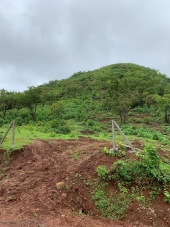


Luke Mitchell wrote:Sandeep, that is a very nice map showing the watershed. I'm sure it'll be a valuable resource for you.
My leaning would be to look at projects in areas with the same climate/rainfall as yours. Are there other projects in your area, on sloping land, that you could discuss your plans with? Thinking further afield, I know there are permaculture projects in Himachal Pradesh and Nepal that are on very steep slopes. Perhaps, if their weather patterns are similar to yours, you could start a conversation?
I know that mountainous areas in Nepal will build terraces for farming, often with large trees planted along the edges of the terraces. These terraces are then cut back on a cycle (I recall it being about 7 years): the vegetation that has grown on the vertical wall between terraces is scraped back and spread on the terrace as a fertility booster. The trees and other vegetation on the terrace edges will help to bind the soil together and prevent erosion, plus provide an occasional yield.
A consideration is the average rainfall, however, and the volume of water coming down in a period of time. I suspect that this might be lower in much of Nepal than for you.
Digging swales with a raised bank, planted with deep-rooted trees and other, matt-forming and fast-growing species, might be better for preventing erosion. This will give you less 'working area' than a terrace, although swales will eventually become terraces, given enough time, as the eroded soil from uphill is deposited behind the swale bank.
Another benefit of swales is that you could direct excess water into pools at key points around your site. The gradient of the swales would have be determined to allow as much of the water as possible to be absorbed by the earthworks - but to run off before they begin to collapse. I suspect digging some test earthworks, on a small scale, might help you determine this.
Have you encountered the Permaculture Guidebook from East Timor? Page 200 onwards talks about tree swale systems in a tropical climate with monsoons.

S Bengi wrote:In your 1st picture you have a flat area, it is an inflection point. I would turn in into a huge swale pond that is 10ft deep, that wraps around the hill. You could then pump water back up to the top in the dry season.
As for the hill itself. Instead of doing swales on contour, I would plant grass on contour. So that it traps all runoff.
You can create biochar from the grass and twigs in the area and use that in your planting beds, they will require alot less water.

Michael Ritcher wrote:Hi Sandeep,
Have you seen these video?
They are about some projects in India that address similar, if not identical challenges to yours.
I hope the links work for you.
I am not familiar with embedding youtube videos in a message. Can some one point me to a tutorial?
Any way, best of luck with your project.
Onward,
Mike
